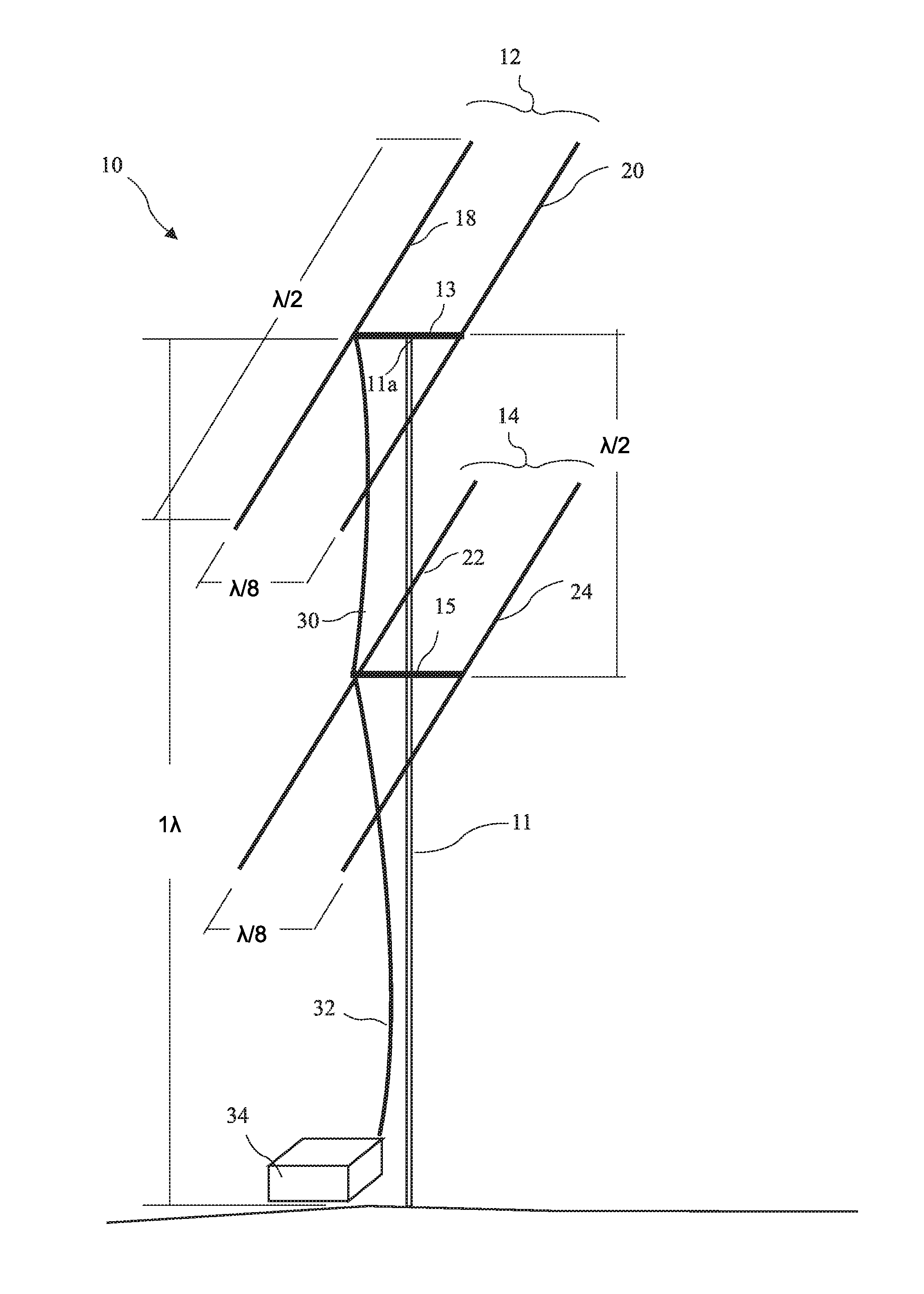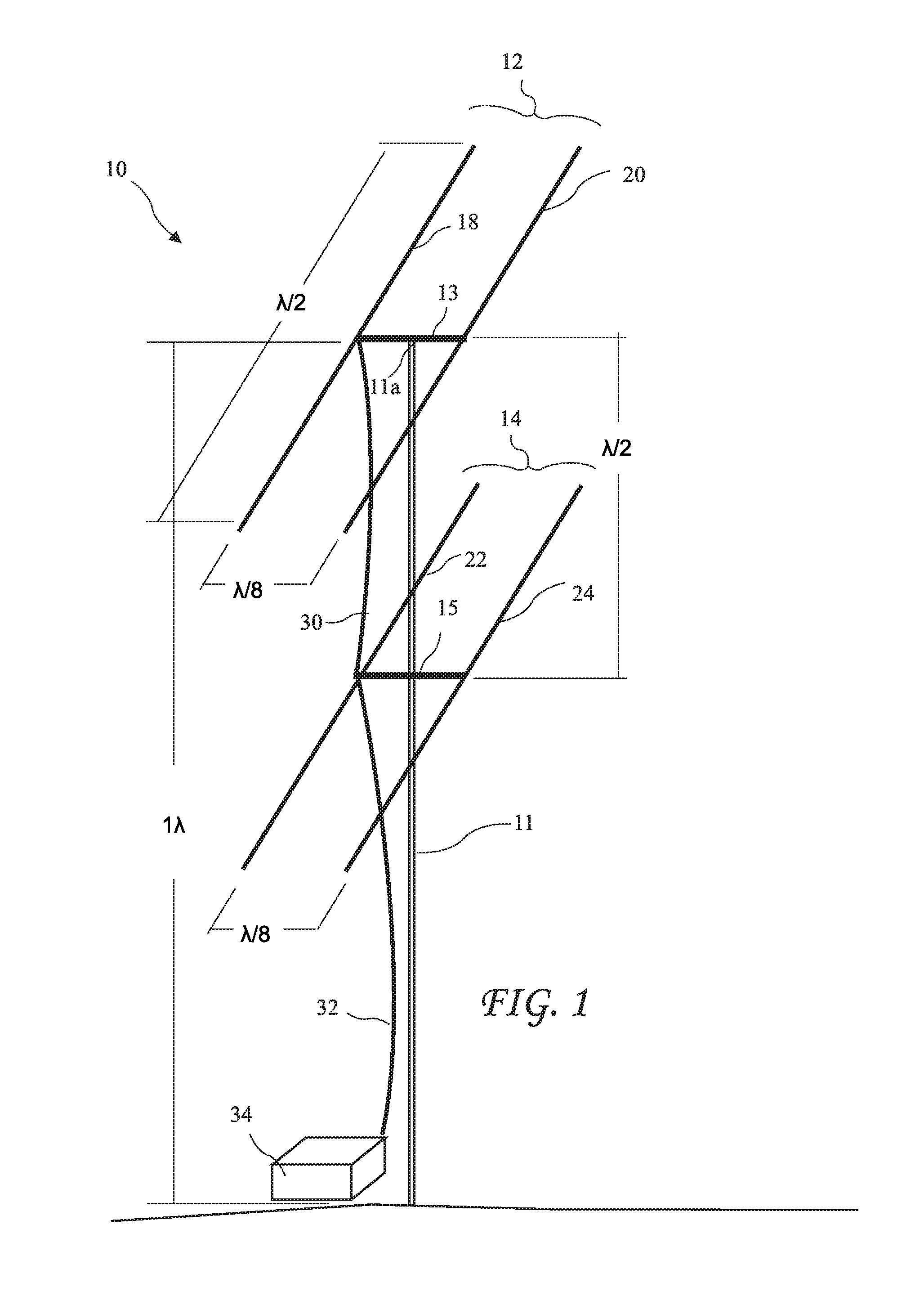Directional antenna
a technology of directional antennas and antenna details, applied in the direction of antennas, antenna details, basic electric elements, etc., can solve the problems of eventual material failure and wind load problems
- Summary
- Abstract
- Description
- Claims
- Application Information
AI Technical Summary
Benefits of technology
Problems solved by technology
Method used
Image
Examples
Embodiment Construction
[0013]The following description is of the best mode presently contemplated for carrying out the invention. This description is not to be taken in a limiting sense, but is made merely for the purpose of describing one or more preferred embodiments of the invention. The scope of the invention should be determined with reference to the claims.
[0014]A detailed perspective view of an antenna array 10 according to the present invention is shown in FIG. 1. The antenna array 10 includes an approximately vertical support (or mast) 11 having a top 11a and supporting an approximately horizontal upper beam 13 residing proximal to said top 11a and an approximately horizontal lower beam 15. Both the upper beam 13 and the lower beam 15 are preferably connected to the mast 11 at the midpoints of the beams 13 and 15 to provide a neutral mechanical balance. Upper beam 13 supports an upper antenna 12 comprising an upper driven element 18 and an upper directing element 20. The lower beam 15 supports a ...
PUM
 Login to view more
Login to view more Abstract
Description
Claims
Application Information
 Login to view more
Login to view more - R&D Engineer
- R&D Manager
- IP Professional
- Industry Leading Data Capabilities
- Powerful AI technology
- Patent DNA Extraction
Browse by: Latest US Patents, China's latest patents, Technical Efficacy Thesaurus, Application Domain, Technology Topic.
© 2024 PatSnap. All rights reserved.Legal|Privacy policy|Modern Slavery Act Transparency Statement|Sitemap



